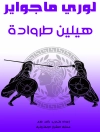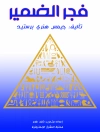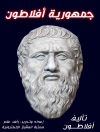A wide-ranging survey of the history of the Roman Empire–from its establishment to decline and beyond
Empire of the Romans, from Julius Caesar to Justinian provides a sweeping historical survey of the Roman empire. Uncommonly expansive in its chronological scope, this unique two-volume text explores the time period encompassing Julius Caesar’s death in 44 BCE to the end of Justinian’s reign six centuries later. Internationally-recognized author and scholar of Roman history John Matthews balances broad historical narrative with discussions of important occurrences in their thematic contexts. This integrative approach helps readers learn the timeline of events, understand their significance, and consider their historical sources.
Defining the time period in a clear, yet not overly restrictive manner, the text reflects contemporary trends in the study of social, cultural, and literary themes. Chapters examine key points in the development of the Roman Empire, including the establishment of empire under Augustus, Pax Romana and the Antonine Age, the reforms of Diocletian and Constantine, and the fall of the Western Roman Empire. Discussions of the Justinianic Age, the emergence of Byzantium, and the post-Roman West help readers understand the later Roman world and its impact on the subsequent history of Europe. Written to be used as standalone resource or in conjunction with its companion Volume II: Selective Anthology, this innovative textbook:
* Combines accessible narrative exposition with thorough examination of historical source material
* Provides well-rounded coverage of Roman economy, society, law, and literary and philosophical culture
* Offers content taken from the author’s respected Roman Empire survey courses at Yale and Oxford University
* Includes illustrations, maps and plans, and chapter-by-chapter bibliographical essays
Empire of the Romans, from Julius Caesar to Justinian is a valuable text for survey courses in Roman history as well as general readers interested in the 600 year time frame of the empire.
Innehållsförteckning
Preface vii
List of Maps xv
List of Figures xvii
Part I Building an Empire 1
1 Introduction: The Roman Republic and its Discontents 3
2 The Tragedy of Julius Caesar 19
3 Caesar’s Heir 29
4 A New Order 37
5 Succession, and the Nature of the Imperial Office 57
6 The Julio-Claudian Dynasty: Loyalty and Dissent 67
Bibliographical Notes to Part I: Building an Empire 83
Part II Pax Romana: ’A Polite and Powerful Empire’ 91
7 Frontiers and Provinces 93
8 From Flavians to Severi 117
9 Age of the Antonines 137
10 Religious Change and Early Christianity 173
Bibliographical Notes to Part II: ’A Polite and Powerful Empire’ 185
Part III Rising to the Challenge 197
11 Into an Age of Iron 199
12 Political Change and the Economy 213
13 Diocletian and the Tetrarchy 223
Bibliographical Notes to Part III: Rising to the Challenge 239
Part IV A New Empire 245
14 The Ascendancy of Constantine 247
15 Cities of Constantine: Constantinople, Rome, Jerusalem 263
16 The House of Constantine 281
17 Julian, Hellenism, and Christianity 297
18 Christianity and Roman Society 307
19 The Late Roman State 321
20 Rome and the Barbarian World 333
Bibliographical Notes to Part IV: A New Empire 345
Part V Facing the Future 355
21 The Fall of Rome 357
22 Into a Post-Roman World 373
23 East and West after the Fall of Rome 389
24 Royalty at Ravenna 403
25 Dialogues with the Past: The Reign of Justinian 417
26 Retrospective 437
Bibliographical Notes to Part V: Facing the Future 447
Abbreviations and Short Titles 457
Bibliographical References 459
Index 479
Om författaren
JOHN MATTHEWS is Professor Emeritus of Classics and History, Yale University, USA. He received his Ph D from Oxford University in 1969 and taught Greek and Roman history at Oxford for many years before moving to Yale in 1996. He was elected Fellow of the British Academy in 1990. He is author of many books including Western Aristocracies and Imperial Court, A.D. 364-425, The Roman Empire of Ammianus, ??Laying Down the Law: A Study of the Theodosian Code, and Roman Perspectives: Studies in the social, political and cultural history of the First to Fifth Centuries. He is also co-author of the acclaimed Atlas of the Roman World.












